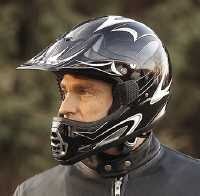Industrial engines. They are still used by several manufacturers (most notably Blata on their entry level bike) and typically produce between 2.5 and 3.5 horse power (hp). All are air-cooled. Tuning and performance parts are very limited.
The Chinese 47/49cc. These engines are used in the Chinese made mk2, and mk3 minimotos. They are air cooled and produce between 2.5 and 3.5 horse power (hp). This engine is different from the industrial engine that is used in the Blata, as it is specifically created for mini moto use.
Polini 4.2 engine. This is the basic Polini engine and, as its name suggests, it produces 4.2 hp in standard form. It is air-cooled and uses the ‘series I’ crankcase with the 3-port cylinder. There is plenty of scope and parts for tuning but few people bother because most racing classes for the 4.2 won’t allow any modifications.
Polini 6.2 engine. The top end of this engine is the same as the 4.2 (3-port) but is available with either water or air-cooling. The bottom end uses the ‘series II’ crankcase. This helps to make it more powerful. Race regulations don’t allow modification to the engine internals but do allow performance parts, the most significant being the exhaust. There are a wide range of alternative exhausts that year after year manage to extract more power from the engine. Consequently the 6.2 ‘tag’ no longer means anything, these little rockets (more often referred to as ‘production’ nowadays) claim power outputs of up to 9hp.
The Chinese made water cooled engine. This engine is very similar to the Polini 6.2 however it is a series 1 crankcase engine. The engine is water cooled and is used in the Origami B1 replica. The engine produces around 7.5/8.5 horse power (hp) Many of the parts on this engine are interchangeable with the Polini.
What’s the difference between the ‘series I’ and ‘series II’ crankcase?. Fuel is drawn from the carb into the crankcase via a one-way valve known as the ‘reed valve’. The intake port (where the reed valve and carb join the engine) on the series I engine will only accommodate a reed valve assembly with one reed ‘petal’ whereas the series II will take a reed valve ‘cage’ that accommodates two reed petals. A two-petal reed valve will allow more fuel mixture to flow into the engine and, therefore, produces more power.
Polini Super engine. The super also uses the series two crankcase but with a 5-port cylinder. It is only available in water cooled now but used to come as air cooled as well. To compete with Polini, Mallossi manufacture an alternative 5-port cylinder. There are no restrictions on tuning supers and with engine ‘porting’, bigger carbs and other performance parts they can be turned into awesome machines (for their size) easily producing 12hp.
What is meant by 3 and 5 port?. This refers to the amount of ‘transfer’ ports built into the cylinder. The transfer ports draw the fuel mixture up from the crankcase and ‘dump’ it above the piston prior to ignition. A five-port cylinder has potential to produce more power.
40cc or 50cc. The 3 port engines are only available in 40cc. The 5 port cylinder comes in both 40 and 50cc. ZPF offer a tuned 5-port polini cylinder with their own ‘special’ cylinder head. The extra cc gives 25% more displacement and, therefore, has the potential for more power. 50’s are more common in the USA but they're catching on fast in the UK. The UK now allows them to race in championships.
The Polini engine components are interchangeable, which can make for some interesting combinations. However, people don’t tend to bother because of class restrictions and it is usually easier to upgrade the whole bike or change the complete engine.
http://www.centerforsocialmedia.org/member/20032/
Subscribe to:
Post Comments (Atom)

1 comment:
Wow that was very amazing featured and high quality and having a powerful engine.
Chinese ATV Parts
Post a Comment